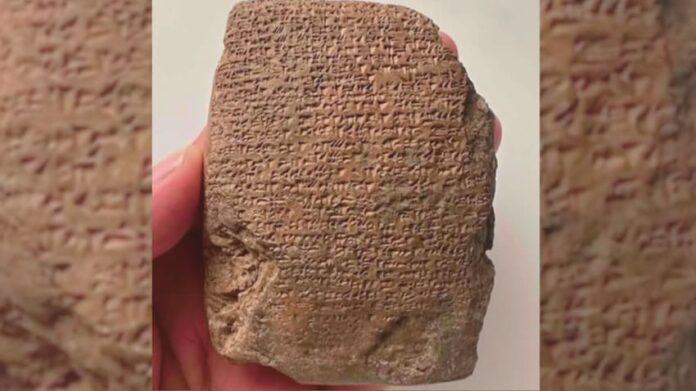Archaeologists in Turkey have made a remarkable discovery that is reshaping our understanding of the Bronze Age. During excavations at Hattusa, the capital of the Hittite Empire and a UNESCO World Heritage site, researchers uncovered a clay tablet written in a previously unknown ancient language.
The language, identified as Kalasmaic, is believed to have been spoken more than 3,000 years ago by the Kalasma people, who lived in the empire’s northwestern regions. Experts say this is one of the most significant archaeological findings in recent decades, shedding new light on the multicultural world of the Hittites.
A Language Hidden for 3,000 Years
The discovery was announced after archaeologists examined thousands of clay tablets unearthed in Çorum. While most of these tablets were inscribed in Hittite, researchers noticed a section in an unfamiliar script. Linguistic analysis revealed that the text belongs to a long-lost language now named Kalasmaic.
According to Prof. Daniel Schwemer of the University of Würzburg, who leads the research:
“The history of the Bronze Age Middle East is still only partially known. With these new tablets, we are significantly expanding our knowledge of that era.”
Hittites and Cultural Diversity
The Hittite Empire, which thrived during the second millennium BC, was known for its cultural tolerance. Unlike many ancient empires, the Hittites not only conquered new territories but also recorded the religious rituals, ceremonies, and traditions of subject peoples in their original languages.
This practice preserved the voices of smaller communities, allowing them to remain part of the empire’s cultural fabric. The discovery of Kalasmaic supports this view, confirming that the Hittites were pioneers of Bronze Age multiculturalism.
How Many Languages Did the Hittites Record?
So far, scholars have identified five minority languages within Hittite archives. However, experts believe the real number could be far higher—up to 30 languages may have been documented. If confirmed, this would make Hattusa one of the most linguistically diverse archives of the ancient world.
The Kalasmaic discovery adds another piece to this puzzle, suggesting that many more lost languages may still be hidden in the ruins of Çorum.
Why the Discovery Matters
The unearthing of Kalasmaic is not just a linguistic breakthrough—it also provides a window into ancient society. By studying the language, researchers hope to learn about the Kalasma people’s culture, beliefs, and daily life.
The find also challenges assumptions about the political and cultural strategies of the Hittite Empire. Recording minority languages may have been a way to strengthen loyalty and ensure stability within the empire’s vast and diverse territory.
Excitement in the Scientific Community
The announcement has sparked excitement across the academic world. Linguists, historians, and archaeologists see this as a rare opportunity to enrich our knowledge of the ancient Middle East.
Prof. Schwemer emphasized that the tablets are “a treasure trove for understanding how empires functioned and interacted with different peoples.”
For Turkey, the discovery highlights once again its role as a cradle of civilization, home to countless hidden stories still waiting to be uncovered.
Looking Ahead
Further analysis of the Kalasmaic text is underway, and researchers hope to decode more of the language in the coming years. Each word deciphered could provide new insights into a 3,000-year-old culture that had been forgotten until now.
The discovery is also expected to attract greater international attention to Hattusa, potentially boosting tourism in Çorum and reinforcing Turkey’s reputation as a hub of archaeological wonders.
real also
The 10,000-Year-Old Neolithic Settlement of Asıklı Hoyuk: The Roots of Cappadocia’s Ancient Life

